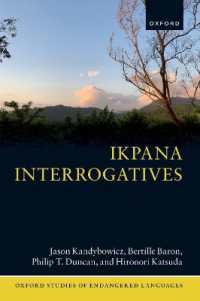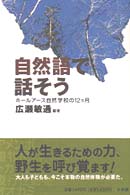- ホーム
- > 洋書
- > 英文書
- > History / World
Full Description
An Archaeology of Resistance: Materiality and Time in an African Borderland studies the tactics of resistance deployed by a variety of indigenous communities in the borderland between Sudan and Ethiopia. The Horn of Africa is an early area of state formation and at the same time the home of many egalitarian, small scale societies, which have lived in the buffer zone between states for the last three thousand years. For this reason, resistance is not something added to their sociopolitical structures: it is an inherent part of those structures—a mode of being. The main objective of the work is to understand the diverse forms of resistance that characterizes the borderland groups, with an emphasis on two essentially archaeological themes, materiality and time, by combining archaeological, political and social theory, ethnographic methods and historical data to examine different processes of resistance in the long term.
Contents
TABLE OF CONTENTS
Acknowledgements.
Introduction.
Outline of the book.
Chapter 1. Time and materiality.
1.1. Archaeological ethnographies.
1.2. Archaeologies of resistance.
1.3. The Archaeology of Borderlands
1.4. Time.
1.5. Materiality.
Chapter 2. Ecology of a shatter zone.
2.1. Landscapes.
2.2. States.
2.3. Deep rurals and peasants.
2.4. Bandits, missionaries and travelers.
Chapter 3. Direct action against the state: the Gumuz.
3.1. Resisting the state north of the Blue Nile.
3.2. The enemy's point of view: origin myths, things and knowledge.
3.3. Making a community of equals: technology, consumption, exchange.
3.4. Bodies of resistance.
3.5. A sense of danger.
Chapter 4. Between domination and resistance: the Bertha.
4.1. Memories.
4.2. A fractured identity.
4.3. Double belief: Between paganism and Islam.
4.4. Double materiality.
4.5. Double performance.
Chapter 5. Of mimicry and Mao.
5.1. The making of a subaltern people.
5.2. Invisibility and hybridity.
5.3. The gender of resistance.
5.4. A space for resistance.
5.5. Remembering the forest.
Epilogue and Conclusions
References.
Index.
About the Author.








